Entrepreneurs came up with increasingly elaborate ways to part Londoners from their money, inventing many staples of the modern leisure industry
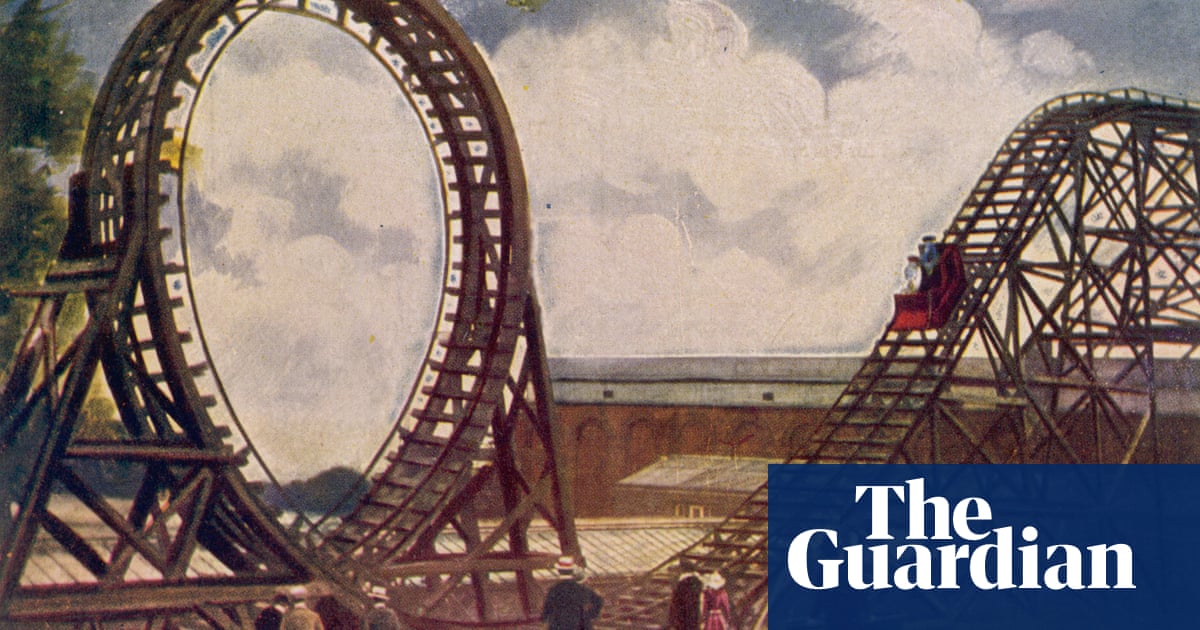
Whether it was visiting a human zoo, taking a bull on a hot-air balloon ride, or singing risqu songs about rhubarb, Victorian Londoners loved to have fun.
As entrepreneurs and impresarios came up with increasingly elaborate ways to make money from the capitals huge potential audience, Victorians effectively invented the modern leisure industry including theme parks, pubs and professional football.
As a new book by historian Lee Jackson explains, the hunt for profit took place against the backdrop of typical Victorian concerns surrounding morality, class and empire. So where did Victorians go for fun? And what still exists today?
Music halls: Wiltons, Whitechapel
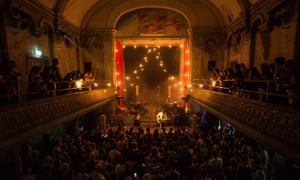
You probably wont hear the music hall classic Pulling My Rhubarb Out at Wiltons these days but this back-street Wapping theatre is one of the few Victorian music halls still standing. Wiltons was built in 1859, as grand purpose-built music halls began to appear in London following changes in licensing laws. Crowds loved the mix of smutty and sentimental songs, as well as slapstick, circus performers and black face minstrels.
InBy the 1860s, music halls were drawing crowds twice as large as the old West End theatres, whose owners launched various countermeasures including downright duplicitous manipulation of licensing loopholes to get their rivals closed down. Music halls were also accused of harbouring prostitutes or providing entertainment of a low moral and intellectual calibre, which is precisely what made them so popular.
Over time, proprietors closed their bars and toned down the acts so that by 1912, music hall was deemed acceptable even for royalty. Thats when George V attended the Royal Variety Performance at the Palace Theatre. At Wiltons you can still see a mix of theatre, comedy and music and theres also a great bar.
Dancing rooms: Argyll Rooms, Piccadilly
Its now a building site near Leicester Square, but when the Argyll Rooms lost its licence in 1878, there was a riot. Drunken medical students were so incensed at the closure of their favourite haunt they took to the streets and, urged on by cheering prostitutes, hurled firecrackers at the police. That gives you an idea of the sort of crowd that used to frequent the Argyll Rooms, the West Ends premier and most dissolute dance hall.
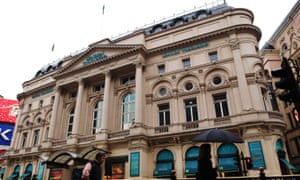
-
The Trocadero in London, formerly the Argyll Rooms, which opened in response to a dance craze in the 1840s. Photograph: David Levene/ the Guardian
A dance craze hit London in the 1840s, and a number of dancing rooms or casinos were opened, including Laurents Casino off the Strand. This was Londons first night-club, and it later transferred to the Argyll Rooms on Shaftesbury Avenue, taking over a space that had previously been used as a museum, automaton show and indoor centrifugal railway a primitive rollercoaster complete with loop-the-loop. The proprietor was Bob Bignell, a West End bookmaker, who saw money in the dancing trend. His club soon attracted crowds out for a good time too much so for the authorities, leading to its eventual shutdown.
The Argyll closed as the dance fad came to an end, and Bignell turned the space into the Trocadero music hall. It kept that name through the 20th century when it was transformed into one of Londons naffest tourist attractions. The site currently awaits development into a hotel.
Gin palaces: Prince Alfred, Maida Vale
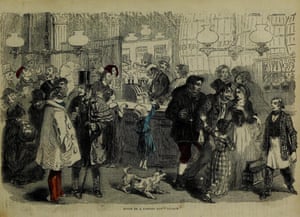
One of the most distinctive features of the handsome Prince Alfred pub in Maida Vale is the panelled dividers which you have to duck under to move from bar to bar. These were installed to ensure different classes of customer had their own safe space and class was a major concern for Victorian moral authorities, who worried that the new forms of mass entertainment were cutting across traditional boundaries.
Sumptuous boozers like the Prince Alfred, rich with decorative wood and etched glass, were created to partly address the class issue by making gin-drinking itself respectable but even then, the different classes needed to know their place.
Temperance campaigners were not satisfied. They argued that it was precisely the gorgeousness of the gin palace the gaslight and gilding, brass fixtures and fittings, large windows, etched glass and mirrors, not to mention the innovation of counter service that lured more respectable members of the working-class into the sinful public house. Despite such concerns, these would all become standard features of the Victorian pub and remain the defining characteristics of the pubs we use today.
Pleasure gardens: Cremorne Gardens, Chelsea
A set of wrought iron gates by a riverside park are all that remain of the Cremorne, once one of the most notorious of Londons Victorian pleasure gardens. Stretching from the Kings Road to the Thames, it opened in 1843 and along with the gardens at Vauxhall, Highbury Barn, Walworth and Islingtons Eagle Tavern, catered for thousands of nightly visitors.
The average pleasure garden had promenades, bandstands and follies, plus curious performers such as Michael Boai, who played music on his chin, or the Beckwith frogs, a family who ate breakfast in an underwater tank. There were elaborate firework displays, including Cremornes pyro-boosted pride-restoring recreations of the Crimean War and Indian Mutiny. Another Victorian favourite was the novelty hot-air balloon ascent. At Cremorne, a balloonist called Madame Poitevin took to the air on the back of a bull. The balloon crashed in Ilford and the animal died of shock, causing the RSPCA to get involved.
Cremorne was managed by a trio of West End publicans, and became identified with a fast set who would swan down to Chelsea after the theatres had closed, raising hell. Brawls were commonplace, and the gardens were popular with prostitutes and Londoners looking for fun. It closed in 1877, after losing its licence. Pleasure gardens more generally lost their raison detre with the establishment of public parks. Londons rapid growth meant the valuable land was usually sold to developers, which is why so little of Londons great pleasure gardens remain.
Exhibition grounds: Crystal Palace, Sydenham
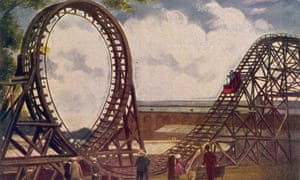
Pleasure gardens were also overshadowed by larger exhibition grounds such as the Crystal Palace, which tried to find a way of balancing entertainment with a hard dose of cultural education. Little physically remains of the Crystal Palace itself, which moved to Sydenham from Hyde Park in 1854, but the grand 200-acre grounds still exist as a public park.
The great glass building was used as a sort of showcase for luxury goods but also had zones with fine art, artefacts and historic architecture such as a Roman villa and 50-ft copies of the statues of Ramesses II in Abu Simbel. There were dioramas showing flora and fauna from around the world, complete with models of West Indians and Native Americans. The gardens hosted elaborate entertainments a race featuring ponies ridden by monkeys was one highlight as well as plays, operas and pantomimes. There was also a human zoo featuring 60 Somalis, transported from Africa to be gawped at by curious South London. The Crystal Palace was destroyed by fire in 1936 but its footprint remains, while you can get a sense of its somewhat haphazard educational ambition through the beloved stone statues of dinosaurs.
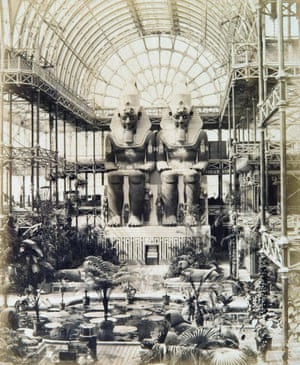
-
Replicas of the famous Abu Simbel statues of Ramesses II inside the Crystal Palace. Photograph: Dominic Winter Auctions/PA
Other exhibition grounds leant towards more straightforward fun: the Earls Court grounds were like a modern theme park, with Ferris wheel, rollercoaster and Buffalo Bills cowboy show, albeit with sideshows tailored towards an annual theme, often chosen to attract finance from commercial partners. This was partly the work of impresario Imre Kiralfy, who created fantastic theatrical displays at Kensingtons Olympia such as Venice In London, which combined canals and three-quarter scale gondolas with walkable streets and bridges and working restaurants and cafes. Kiralfy would later open White City, the epitome of the Victorian theme parks promise to provide both instruction and amusement. White City had orientalist architecture, thrilling rides, human zoos (Irish this time) and pavilions sponsored by Moet & Chandon all tied together with a thread of education that was increasingly hard to discern amid the ornamental canals and rickety roller-coasters.
Winter Gardens: Royal Aquarium, Westminster
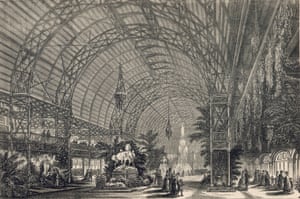
On the site of the Methodist Central Hall was a short-lived attraction that attempted to transport the seaside to central London. It was railways that made Margate and Southend accessible to Londoners, and some of the leisure activities peculiar to the seaside soon made it back to the capital.
One of these was the winter garden, a sort of compact, centralised exhibition ground that day-trippers could visit when it rained. Southport opened the first in 1874 and the concept was transposed in full to Westminster in 1876.
Southports winter garden offered a promenade through a large tropical conservatory, a basement aquarium complete with crocodiles, games rooms, a concert hall and landscaped gardens with caves, grottoes and ornamental bridges. A skating rink was later added. Londons version, the Royal Aquarium and Winter Garden, was a straight copy, crocodiles excepted. It flopped, and the site was levelled in 1903.
Football grounds: Craven Cottage, Stevenage Road, Fulham
Fulham FC, Londons oldest professional football club, still play at their first ground, built by the Victorians in 1896. The oldest parts of the ground are the pavilion and main stand, dating to 1905, and a sign of how popular and financially successful football had become under the Victorians. Although versions of the sport had been around for centuries, it was the Victorians who codified the game and then professionalised it. This led to enclosed grounds where spectators paid for admittance, with the income spent on acquiring new players. The modern game was born.
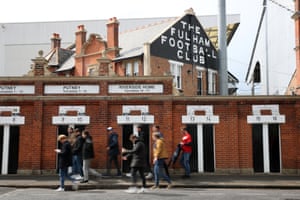
-
Fulham FC are Londons oldest professional football club, and have played at the same ground since 1896. Photograph: Christopher Lee/Getty Images
London has many claims to football history. The first trial match under FA rules was played in 1863 at Limes Field, the former home of Barnes FC, since demolished. A second demonstration match took place in Battersea Park. London was also the location of the first FA Cup final, at Kennington Oval in 1872, while finals were also played at Crystal Palace and the since demolished Lillie Bridge in West Brompton.
Londons oldest football ground? Thats the Old Spotted Dog in Forest Gate, a former cricket ground that has been home to non-league Clapton FC since 1888.
Palaces of Pleasure by Lee Jackson is published by Yale
Follow Guardian Cities on Twitter, Facebook and Instagram to join the discussion, catch up on our best stories or sign up for our weekly newsletter


Recent Comments